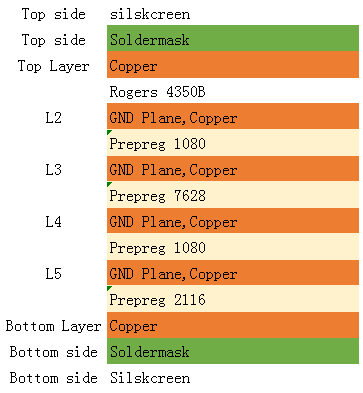Why stack-up?
The irreversible development of modern electronics has been increasingly pushing Leiterplatten towards such demands as miniaturization, light weight, high speed, better functionality and reliability, and longer lifetime, which results in the popularity of Multilayer PCBs. Combined by a type of semi-solid adhesive which is called “prepreg”, two or more single and/or double-sided PCBs are stacked together to generate multilayer PCBs through reliable predefined mutual connection between them. There are three or more conductive layers in one multilayer PCB with two layers outside and one layer synthesized in the insulation board. With the increase of PCB complexities and densities, it’s possible for some issues to take place such as noise, stray capacitance and cross talk when layer arrangement gets inefficient design.
Planning optimal multilayer stack-up is one of the most important elements in determining the Electromagnetic Compatibility (EMV) performance of a product. A well-designed layer stack-up can both minimize the radiation and can stop circuit from being interfered by external noise sources. Well-stacked PCB substrates can also reduce signal cross talk and impedance mismatch issues. Jedoch, an inferior stack-up may get EMI (Elektromagnetische Störung) radiation rising, because reflections and ringing in the system as a result of impedance mismatch can dramatically lower products’ Leistung und Zuverlässigkeit. This article then focuses on layer stack up definition, its designing rules and essential considerations.
What Is Stack-up?
Stack-up refers to the arrangement of copper layers and insulating layers that make up a PCB prior to board layout design. While a layer stack-up allows you to get more circuitry on a single board through the various PCB board layers, the structure of PCB stack-up design confers many other advantages:
• A PCB layer stack can help you minimize your circuit’s vulnerability to external noise as well as minimize radiation and reduce impedance and crosstalk concerns on high-speed PCB layouts.
• A good layer PCB stack-up can also help you balance your need for low-cost, efficient manufacturing methods with concerns about signal integrity issues
• The right PCB layer stack can enhance the Electromagnetic Compatibility of your design as well.
It will very often be to your benefit to pursue a stacked PCB configuration for your printed circuit board-based applications.
For multilayer PCBs, general layers include ground plane (GND plane), power plane (PWR plane), and inner signal layers. Here’s a sample stack-up of an 6-layer Rogers PCB.

In accordance with this figure, it’s obviously clear to indicate layer distribution in PCBs conforms to a symmetrical or balanced structure. Apart from layer distribution, the spacing between layers should be taken seriously as well. To meet the requirement of miniaturization, minimum trace spacing must be obtained while planning layer stack-up. The space between layers can be either core or prepreg. Multilayer boards usually consist of at least one or more cores and prepregs. Cores are made up of a copper-plated glass-reinforced epoxy laminate sheets. The thickness of core is in the range from 0.1mm to 0.3mm.
Prepreg is the common term for a reinforcing fabric which has been pre-impregnated with a resin system. This resin system (typically epoxy) already includes the proper curing agent. The main function of prepreg is to stack all layers into a whole board by high temperature. The following table shows physical and chemical attributes of main categories of Prepreg, das heißt, 1080,2116, Und 7628.

Actually, thickness of each type of prepreg isn’t always stable and adjustments will be made to meet specific PCB thickness demand. Some factors have to be taken into consideration when determining the count of prepreg including thickness of inner layer, product design thickness requirement or manufacturing technology requirement, features of prepreg, practical performance and the actual thickness after stack-up trial. Also. All the finished PCB thick tolerance will be ±10%.
Blind Via and Buried Via stack-up

If you like the idea of PCB stack-up for your electronic applications that use Leiterplatten, the only place you need to go for PCB stack is Alcanta. We are a full-service turnkey solution for all things concerning printed circuit boards. We can help you:
• Develop your PCB stack-up design
• Fabricate your layer stack-up PCBs
• Create prototypes to test your designs for any possible flaws
• Do full PCB runs
With over ten years of experience in the area of printed circuit boards manufacturing, you can be sure that Alcanta is a name you can rely on for your multi-layer PCBs and all your PCB-related needs. We excel at speed of order turnaround, quality and value to an extent that other fabricators of printed circuit boards cannot match. Our standard PCBs meet the stringent IPC2 and IPC3 standard of quality, and our company is fully ISO9001:2008 compliant. Please send Email with your PCB gerber files. Any questions you can check with our PCB engineers.
 ALCANTA-TECHNOLOGIE(SHENZHEN)CO.,LTD
ALCANTA-TECHNOLOGIE(SHENZHEN)CO.,LTD